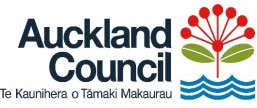 Business Case – Medium complexity
Business Case – Medium complexity V18
Project information
Project name
Albany Pools - install solar panels
Sentient ID#
36482
Programme name
PRG Energy Ef iciency and Sustainability
Programme Sentient
27039
ID #
Project complexity
rating (PCAT)
Author and date
Deena Benjamin
Project budget
$376570.00
requested and funding
source(s)
Estimated start and
29/Apr/2022
finish date
03/Mar/2023
Document control
<Text in grey boxes or <> provides commentary and guidance for drafting purposes only and should
be deleted when no longer required.>
Document history
Version
Date
Updated by
Update details
Strategic case (Case for change)
Introduction
Background
This is the first project being undertaken using Project Gigawatt funding.
Project Gigawatt developed out of a desire from within Council to explore
how solar and battery technology could be used to minimise energy
usage within Community Facilities and demonstrate Council’s
commitment to sustainability and its low carbon action plan. •
A
closed Request for Proposal was issued to three known suppliers of solar
photovoltaic (PV) arrays, all of whom responded to the RFP. After
evaluation and discussions, we recommended awarding the contract to
Reid Technology Limited for a contract value of $362,263.65, plus a 10%
contingency. James Brown from Stellar is the PM looking after this
project.
Opportunity/problem
Give evidence-based facts (where possible) for the problem/opportunity
to demonstrate current state, what problem is to be addressed and what
would happen if we were to continue status quo.
Please consider:
- Consider user feedback by consulting with service providers
- Park Services may undertake a service assessment if necessary.
Typically for buildings this has been conducted as part of a wider
assessment on service levels and the growth areas throughout the city
have been considered. PSR should be consulted with to determine if any
strategic or service assessments have been done.
- To cater for growth.
- Most local boards have networks plans which have an initial review of
1 | P a g e
Business Case – Medium complexity
 Business Case – Medium complexity
Business Case – Medium complexity V18
Introduction
the provision in the area and proposed high level options for the identified
gaps. This is essentially a strategic review.
- To maintain the service level through renewal.
Objectives
To increase energy efficiency in a more sustainable way for the
environment
To save money long-term on electricity
- Use of safe methodologies. Ensure work is accomplished keeping into
account safe methodologies this could include removal of asbestos,
seismic improvements, etc., health and safety of public/staff/workers is
important to consider, ensure methodologies are robust and safe in
design.
- Improved whole of life costing. This means considering how many years
is it going to last, including maintenance costs, i.e., building wash, etc.
- Ensure sustainability. Consider using sustainable products of ering
higher lifetime, carbon free specs, environmental friendly, better UV
protection, bet er degradation, etc.]
High level benefits
Increased electricity generation in the Auckland Region giving improved
energy resilience.
Carbon Footprint reduction
Alignment to strategy:
Auckland Plan Outcomes
Our Strategy Goals
Climate Priorities
Māori Outcomes
Built environment
No specific outcome focus areas
Describe the strategic linkage in more detail here:
Climate change
Project management and decision-making to consider the reduction of
(adaptation and
GHG emissions through sourcing of low-carbon material options and use
mitigation):
of products with environmental declarations for embodied carbon
reductions. Consideration should be given to minimise waste from existing
components through recycling and aiming for maximum diversion from
landfill.
Māori outcomes and
engagement
Alignment to existing <Describe any alignment or link to an existing programme/s of work>
programmes:
Constraints
Constraints: In planning and delivering the work, there are some general
environmental and/or site-specific constraints that require due
considerations.
Some examples are:
- Building occupants/tenants
- Weather conditions
2 | P a g e
Business Case – Medium complexity
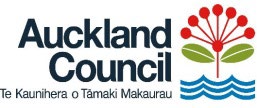 Business Case – Medium complexity
Business Case – Medium complexity V18
- Current operation of the premises - make sure you liaise and
communicate with building occupier/tenants. You may require them to shut
their operations during their peak business.
- There is a risk that the pool roof cannot take the weight of the solar
panels. This risk is considered to be low as the building was intended to
have solar panels, but these were cut from the build project due to budget
constraints. A structural assessment wil be undertaken as part of the
project.
-If the grid is congested with generation Vector may require grid
strengthening in the area before agreeing to have distributed generation
connected to their electricity network. The risk of this is low as there is a
large electrical supply to the building. A distributed generation (DG)
application wil be lodged with Vector before the design is finalised.
-The equipment wil need to be shipped to New Zealand. Supply chain
constraints may cause delays.
Further requirements should be discussed with the relevant Design
principal. Refer to Practice notes for further detail on constraints and how
to manage them.
Dependencies
- Adequate budget
- Structural surveys
Assumptions
-The roof is checked to ensure it can take the weight of the solar panel
prior to installation.
- Budget is adequate
- Consents are non-notified and approved
- Stakeholders and Governing body are informed
- Programme of works for the project is manageable
Health, safety and
wellbeing
[Edit as required:
At Auckland Council, we put the health and safety of our people and the
people of Auckland first. We empower everyone working across the
council family to stop work and speak out if they see unsafe work
practices.
As part of the due diligence process, it is important to regularly monitor
and audit the work site(s) using iAuditor, to ensure that all the safety
controls that are discussed and agreed to in meetings or written into
documentations are put in place and checked to operate effectively.
- Ensure contractor provides Site-Specific Safety Plan (SSSP) and it is
reviewed and approved by project manager. Al projects must have a
Safety in Design report and register. It is recommended this be attached to
the front page of the design/professional services document
- Council has an obligation to provide accessible and inclusive assets
- Accessible and inclusive considerations include:
- Providing accessible or mobility impaired access
- Ensure fire egress and emergency evacuation processes
- Removing uneven surfaces and trip hazards (e.g. signage etc)
- Ensure methodology and oversee impact on staff/public.
- Working on heights, working on edges, working on roof or confined space
etc.
- Ask for SSSP and site audit plan.
- Some of the H&S related risks to people and users wil only be possible
to mitigate by scheduling the work i.e. doing the work after hours or closing
the facility which wil all have budget implications and critical to consider at
3 | P a g e
Business Case – Medium complexity
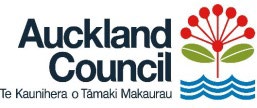 Business Case – Medium complexity
Business Case – Medium complexity V18
the time of setting the budget]
High level risks and
Unsuitable ground conditions, unidentified closed landfil s or other below
issues
ground issues not allowed for in project planning
Closed landfills and arboricultural works require asset owner approvals
(AOAs). They often required significant timeframes to be reviewed and
granted.
Damage during construction to works and equipment. Damage after
construction to the asset. Includes high winds, tornadoes, heavy rain, slips
and king tides etc.
Stakeholders not consulted on proposed design or informed of project
progression, including physical works timeframes
Issues with neighbours complaining about the park, works or operations.
Errors, mistakes, broken plant, lack of resource etc.
Always a risk on major construction projects. Common injuries and deaths
are falling from height, impact with vehicles and heavy lifting.
Clubs, users and leaseholders are required to meet the consent conditions
once operating
Example: Covid 19 has resulted in work stoppages, increased costs, lack
of resources, il ness and material shipment delays
Differing political opinions and expectations can lead to major delays and
cost increases i.e. for additional security due to protestors
Usergroups and park bookings teams need to be kept up to date with the
programme of work.
Possible scope creep pressure from future users, stakeholders and
politicians
Heavy vehicles moving on and off site, general public vehicles.
Common to many construction projects trenching is prone to collapse
without warning
Children may be out of the immediate reach of their parents and are prone
to irrational and dangerous behaviour. Both design and construction
methodology need to consider this risk.
Consequence: Potential injury or death.
Cause: Inadequate design or errors during the design process. Design
does not consider all elements of safety in design for the given site,
situation, user group or environment.
Consequence: Injury
Economic case (Determing value for money)
In Scope
To install a Solar Photovoltaic (PV) array on the roof of Albany Stadium Pool. The proposed solution
from Reid Technology Limited is a 206.8 kilowatt peak (kWp) system made up of 440 solar modules.
It is expected the system wil generate approximately 335,900 kWh of electricity per year.
Out of scope
Anything unrelated to the solar panels
Service change assessment
Service / process description Proposed change & impact
Will this initiative cause a
change to a service or process
e.g. adding an additional
service, changing or removing
4 | P a g e
Business Case – Medium complexity
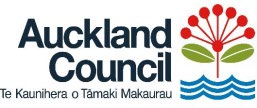 Business Case – Medium complexity
Business Case – Medium complexity V18
an existing service?
Outline options analysis
<To make an informed decision, what options have been researched to demonstrate we are getting
value for money for the investment? How do the options stack up against each other?>
Option
Description
<Option 1>
<Option 2>
<Option 3-5 etc.>
Description (click here for CBA
Option 1: Do
Option 2:
Option 3:
Option 4:
worksheet)
nothing
Appraisal period (years)
Implementation cost ($000)
Whole of life cost ($000) (ongoing
consequential opex, disposal cost, plus
implementation cost)
Cost Benefit analysis:
Financial benefits and costs (excluding depreciation)
Net present value of benefits ($000)
Net present value of costs (whole of life)
($000)
Net present value ($000)
Non-financial benefits
Benefit 1
Benefit 2
Benefit 3
Preferred option
<Highlight the rationale or compelling reasons for preferring one option over others. Along with the
above analysis there may be other considerations that have resulted in the preferred option such as
time to deliver, risk, climate impact etc>
Benefits tables
<The
Benefits Library is a guide which can be used to assist with completing the financial benefits
and non-financial benefits tables below. Please contact the
EPMO if you require additional
assistance>
Benefits and dis-benefits
Category Sub-
Type
Metric
Benefit statement Benefit
Benefit
Source of Baseline
Expecte
category
Description
Measure and data or
d benefit
Method
cost
and
centre/GL
date(s)
code
Non-
Increased electricity
Increased
Electricity
TOTAL
financial
generation in the
electricity
Invoices as well
Auckland Region
generation in
as the ESP
giving improved
the Auckland
monitoring
energy resilience.
Region giving
improved
energy
resilience.
5 | P a g e
Business Case – Medium complexity
 Business Case – Medium complexity
Business Case – Medium complexity V18
Benefit owner & Role
Santosh Puthran
Benefit Reporter
Sentient Admin
*Note: If there are additional benefits, add extra rows, with a Benefit owner signature line after each
benefit.
Non-quantifiable Benefits and additional information
Commercial case (Procurement of preferred option)
Detailing the procurement strategy
[Edit as required:
- Design services wil be procured via the professional service Master Service Agreement (MSA)
procurement panel unless alternative procurement can be justified and approved by the panel
manager.
- Physical works procurement process in CF currently stipulates the Full Facilities Maintenance
(FFM) supplier for the area associated with should be included within the supplier selection
depending on the value. The remaining suppliers should be selected upon consultation with
experienced the Design Principal and procurement staff.
- Bulk tenders and amalgamation should be considered when timing and efficiency warrants.
However depending on the number of projects single tenders may also be let. PMs should consult
with the Design principals and/or Area Managers.
- Weighted attributes should be considered or contractors asked to submit resource list, current
projects, and programme if a non-conforming tender is chosen.
- Health and Safety should be given a high priority, and at tender stage worker competency
assessed, including for example current Heavy Transport (HT) licensing for drivers, other relevent
tickets and plant experience.
- Site works and equipment installation can be tendered separately or under a main contractor. Either
contract must have the equipment supplier responsible for the equipment installation to keep the
compliance liability with the manufacturer.
- Build and equipment suppliers should be selected upon consultation with experienced The Design
principal and procurement staff.
- Defects period: recommended to be 12 months
- For sensitive sites and high value projects, weighted attributes are useful for ensuring the contractor
has relevant previous experience., product warranty generally 5 years, feel free to discuss with
Design Team]
6 | P a g e
Business Case – Medium complexity
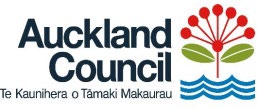 Business Case – Medium complexity
Business Case – Medium complexity V18
Risk Description
Mitigation
Date
Owner
Idenfitied
Unsuitable ground conditions,
Ensure design follows NZ
24/08/2022
unidentified closed landfil s or
ground investigation
other below ground issues not specification at a minimum.
allowed for in project planning
Closed landfills and
Ideally have AOAs approved
24/08/2022
arboricultural works require
the year before physical works
asset owner approvals (AOAs). is scheduled to begin consider
They often required significant processing times of 6 months
timeframes to be reviewed and or more.
granted.
Damage during construction to Careful planning of work and
24/08/2022
works and equipment. Damage consideration of weather
after construction to the asset. impacts
Includes high winds,
tornadoes, heavy rain, slips
and king tides etc.
Stakeholders not consulted on Share and seek feedback from 24/08/2022
proposed design or informed of key stakeholders to ensure the
project progression, including
design is fit for purpose and
physical works timeframes
meets users expectations]
Issues with neighbours
Adhere to resource consent
24/08/2022
complaining about the park,
conditions - keep neighbours
works or operations.
informed
Errors, mistakes, broken plant, Adhere to best practice at all
24/08/2022
lack of resource etc.
times. Competitive
procurement process,
selecting only the best value
contractors contract. Strict
adherence to programme and
quality plans
Always a risk on major
Ensure Health and safety is
24/08/2022
construction projects. Common the number 1 priority - adhere
injuries and deaths are falling
to best practice on site - follow
from height, impact with
all Council Process - regular
vehicles and heavy lifting.
audits.
Clubs, users and leaseholders Community Services to
24/08/2022
are required to meet the
monitor and control
consent conditions once
operating
Example: Covid 19 has
Sufficent planning,
24/08/2022
resulted in work stoppages,
contingency, contract
increased costs, lack of
managment and safety
resources, il ness and material planning.
shipment delays
Differing political opinions and Allow sufficient contingency for 24/08/2022
expectations can lead to major politically sensitive projects
delays and cost increases i.e.
for additional security due to
protestors
7 | P a g e
Business Case – Medium complexity
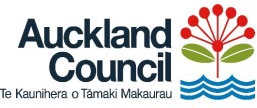 Business Case – Medium complexity
Business Case – Medium complexity V18
Usergroups and park bookings Ensure assets are booked out 24/08/2022
teams need to be kept up to
or otherwise allocated for the
date with the programme of
duration of the works.
work.
Possible scope creep pressure Limit scope to that specified in 24/08/2022
from future users, stakeholders this business case
and politicians
Heavy vehicles moving on and TMPs and safety audits.
24/08/2022
off site, general public
vehicles.
Common to many construction Follow Worksafe best practice 24/08/2022
projects trenching is prone to
including benching and shoring
collapse without warning
of works
Children may be out of the
Isolate. Engineering Control
24/08/2022
immediate reach of their
parents and are prone to
irrational and dangerous
behaviour. Both design and
construction methodology
need to consider this risk.
Consequence: Potential injury
or death.
Cause: Inadequate design or
Follow Master Service
24/08/2022
errors during the design
Agreement (MSA) panel and/or
process. Design does not
approved procurement
consider all elements of safety processes for professional
in design for the given site,
services. Ensure Safety in
situation, user group or
Design is included within the
environment.
scope of work. Ensure all
Consequence: Injury
adequate indemnity insurances
are in place.
Issue Description
Resolution
Resolution Owner
Date
Financial case (Affordability & funding)
Financial analysis
Please complete the financial
FY 2022
FY 2023
FY 2024
FY 2025
FY 2026-28
Total
analysis spreadsheet and use the
output to complete this table
Capital expenditure
Operating expenditure
Total expenditure
Consequential operating expenditure
Financial benefits (revenue/cost
reduction)
Net ongoing cost
<Please attach the financial analysis spreadsheet as an appendice.>
Financial sources
<Specifically, how is this initiative being funded i.e. is part of it from existing BAU? New or additional funding
request or LTP allocated funds? Is there any other external party funding involved? Are other departments
within council also contributing a portion from their own BAU budget?
>
8 | P a g e
Business Case – Medium complexity

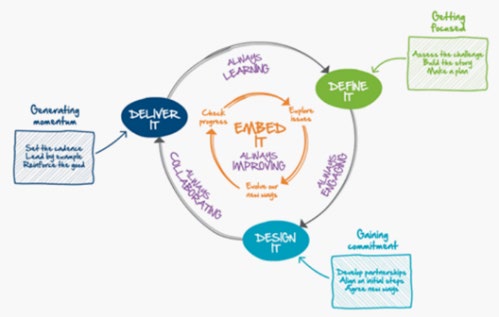
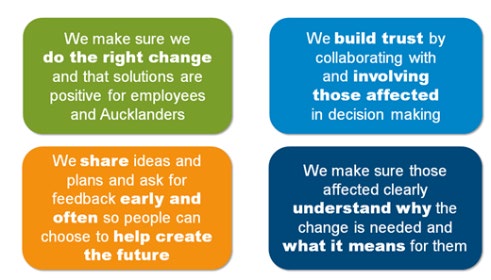 Business Case – Medium complexity
Business Case – Medium complexity V18
Contingency
<What contingency is included in the above costs. This is calculated by individual projects and is based on
risk.>
Management case
Change Impact Assessment
For scoring assessment guideline, please refer to
“Change impact assessment matrix” in Kotahi
<If you scored 1 extreme or 2 High or 3 Medium, you’d need to engage a “Change Manager”>
Impact Assessment
Impact
(Low, Moderate, Medium, High, Extreme)
Size of the change
Complexity of the change
People increase/reduction change
People – skil s, training, new ways of working
System change
Process change
Organisation structure change
Culture change
Change management
The <name of programme/project/nitiative> wil follow
Auckland Councils Change Management
Framework.
The change management plan wil need to be completed in the plan phase, if applicable.
Stakeholder engagement
Key stakeholders
The following stakeholder groups wil be impacted by this change in the following ways:
Stakeholder name / group /
Evidence of collaboration /
Agreed outcome
contact
impact assessment
- Sarah Clarke - Centre
Manager
- Santosh Puthran – Senior
Aquatics Facilities Specialist
- Kris Bird – Area Operations
Manager
- Customers of Albany Pools
- Members of the public
The stakeholder engagement plan wil need to be completed in the plan phase, if applicable.
9 | P a g e
Business Case – Medium complexity
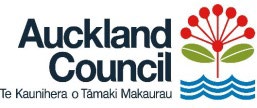 Business Case – Medium complexity
Business Case – Medium complexity V18
Outline project plan
Outline project plan
How wil this project be delivered, by who and when?
Deliverable(s)
Delivered by
Date due
[Edit as required:
A deliverable is an element of
output within the scope of the
project. Refer to the Auckland
Design Manual, practice notes &
specifications for more detailed
information.
The deliverable should consider:
- Aesthetics
- Protection of structure
- Continued use
- Extension of life
- Replacement with new due to new
standards or changes to building
code
- Outlook of an asset
- Futureproofing of an asset
Ultimately, the asset should be fit
for purpose and aligned to the
scope and objectives (consider the
whole of life considerations,
including maintenance and end of
life). For example, safe, functional
space could be the deliverable,
whereas HVAC would form part of
the scope.]
Health and safety
This project is expected to < include / not include > design or modification of an existing asset, as
such the requirements of Safety in Design wil apply/not apply to this project.
There is legal responsibility on Auckland Council (as the ‘Person Conducting a Business or
Undertaking’) to ensure, so far as is reasonably practicable, the health and safety of workers and
other persons over the life of the asset.
The following health and safety related risks were identified in the option assessment relating to this
project which wil need to be considered for elimination or where not able to be eliminated to be
minimised.
Option Health and Safety Risk
Project Phase
<e.g. Striking live power cables>
<e.g. Stormwater network surcharge, dislodging manhole lid exposing
risk of falling>
<e.g. Work in confined space to clean device>
10 | P a g e
Business Case – Medium complexity
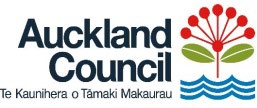 Business Case – Medium complexity
Business Case – Medium complexity V18
Approval and acceptance
Handover activities
The following activities and documents wil be handed over once acceptance criteria have been met:
<Designs, procedures, registers, maintenance manuals, templates, as built materials, post-project
benefits monitoring and realisation activities, post project evaluation etc. (attach any relevant
documentation to appendices)>
Governance sign of Name
Signature to endorse Date
Comment
I agree that the potential costs/benefits identified are realistic, and the low complexity delivery path
reflects PCAT findings and approve and or endorse the project to continue for funding.
Financial Manager /
Commercial
Manager
Project sponsor
Grant Jennings
Business owner
Julie Pickering
Benefit Owner
Santosh Puthran
SME endorsement
If Name
Signature to endorse Date
Comment
applicable
Eg.Change, legal,
financial
transactions,
governance,
communications etc
Advisor/stakeholder Name
Signature to endorse Date
Comment
endorsement
Appendices
Appendices
<Attach PCAT report and all related supporting documents/information to this section>
11 | P a g e
Business Case – Medium complexity
Document Outline












